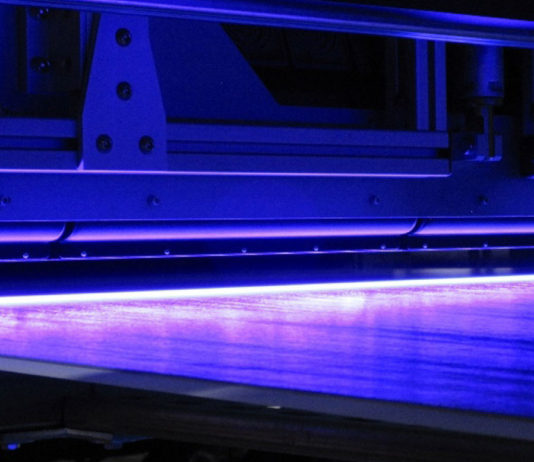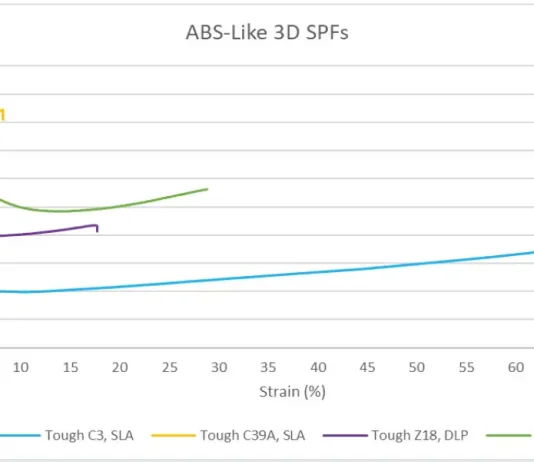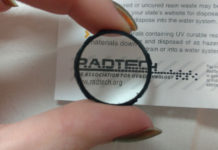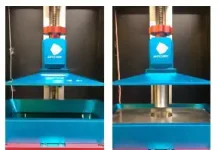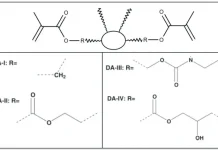Electron Beam Curing Properties of Waterborne Monomer and Polymer Materials
By Stephen C. Lapin and Kathryn E. Classon, PCT Engineered Systems, a division of ebeam Technologies, Comet Group
Abstract
The electron beam (EB) curing properties of...
EHS Guide Enhances Safety for Users of UV-Curable 3D Printing
By Nancy Cates, contributing writer, UV+EB Technology
Increasingly, 3D printers are being used in non-laboratory settings such as libraries, schools or workshops. While many different...
New Oligomers for 3D Printing Inks
By Heather Francis, chemist, and Ahmet Nebioglu, R&D manager, Dymax Corporation
Abstract
The present work addresses a strong market demand for oligomers for 3D printing formulations....
25th Annual FSEA Gold Leaf Awards Honor UV Decorating Techniques
25th Annual FSEA Gold Leaf Awards Honor UV Decorating Techniques
UV+EB Technology
Embossing, foil stamping and specialty effects can raise the level of quality, added value,...
Regulatory News
TSCA Reset
The Toxic Substances Control Act (TSCA), as amended by the Frank R. Lautenberg Chemical Safety for the 21st Century Act, requires the US...
Using UV-Curable Polymers to Create Optics
By Sam Garton and Neil Cramer, Colorado Photopolymer Solutions; Victor Piñón III and Ana B. Baca, Sandia National Laboratories; Freddie Santiago, Naval Research Laboratory;...
The Beauty of Dazzling Print: Cast and Cure Adds Sparkle
Edited by Dianna Brodine, UV+EB Technology
Cast and Cure™ from Breit Technologies, Overland Park, Kansas, is a sustainable, affordable decorative coating process that integrates “casting”...
Additive Manufacturing of Novel Surface-Eroding, Non-Swelling Anhydride Resins
Whytneigh R. Duffie; Kevin D. Barz; Tsvetanka S. Filipova; Katrina J. Donovan; Timothy M. Brenza; and Travis W. Walker, South Dakota School of Mines...
Standards for Photopolymer Additive Manufacturing
By Stephanie Benight, Ph.D., Tactile Materials Solutions LLC, sbenight@tactilems.com;
Callie Higgins, Ph.D. NIST, Colorado School of Mines, callie.higgins@NIST.gov
As additive manufacturing technology matures and 3D-printed parts...
Improvements of 3D Printed Parts via Bio-Based Modification of Photocurable Resins
By Nathan Noyes and Wouter Vogel, Ph.D., Croda
Within polymer-based additive manufacturing, photocurable resin-based processes have gained acceptance due to advantages in printing time, surface...
- Advertisement -
- Advertisement -



